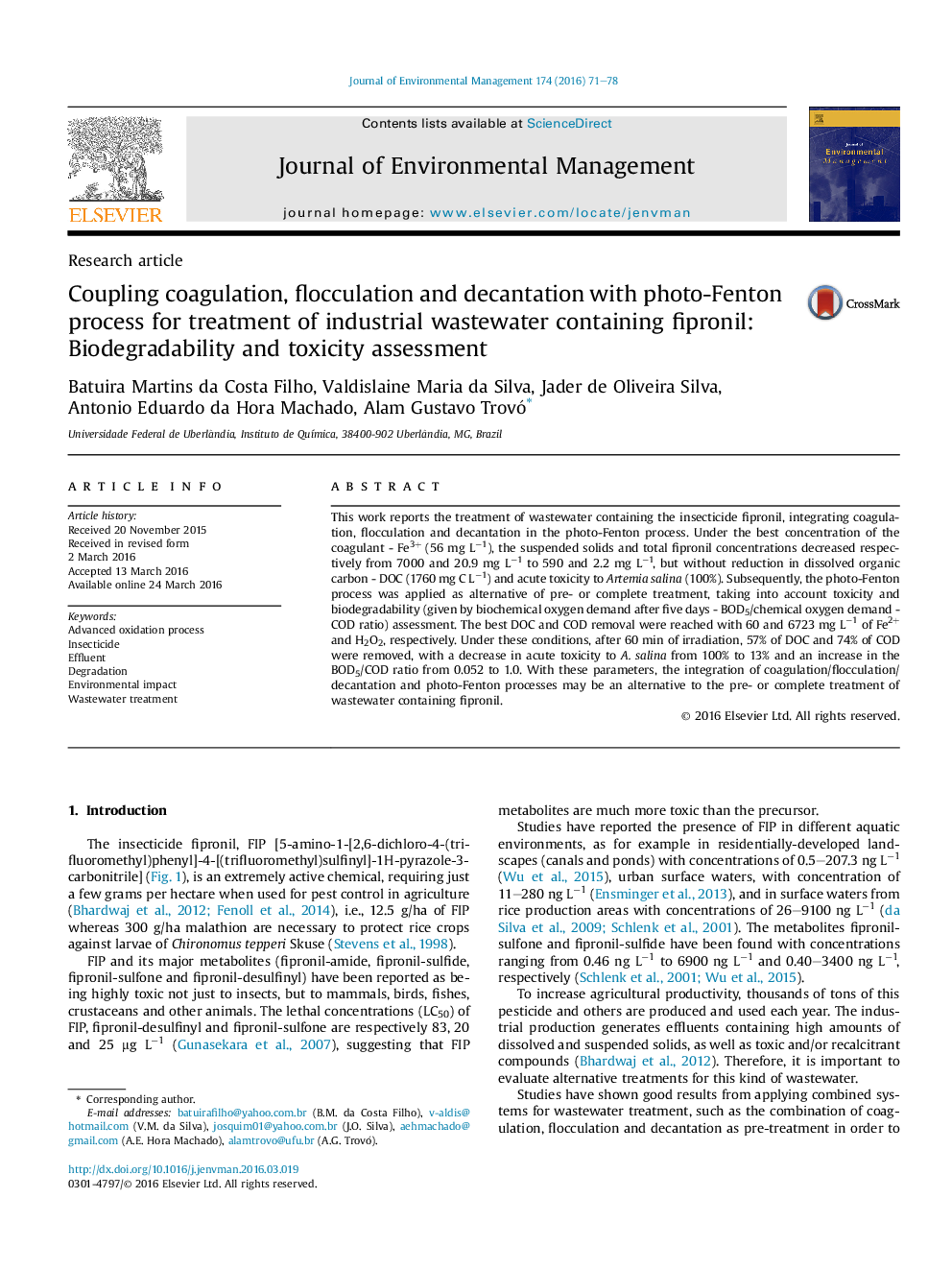| Article ID | Journal | Published Year | Pages | File Type |
|---|---|---|---|---|
| 1055394 | Journal of Environmental Management | 2016 | 8 Pages |
•A general protocol based on combination of conventional and AOP processes.•92% suspended solids and 89% total FIP removal using 56 mg L−1 of Fe3+ as coagulant.•Treatment of industrial wastewater containing FIP with BOD5/COD ratio of 0.052.•Photo-Fenton generated oxidised compounds, more biodegradable and of low toxicity.•57% of DOC and 74% of COD removal after 60 min of photo-Fenton process.
This work reports the treatment of wastewater containing the insecticide fipronil, integrating coagulation, flocculation and decantation in the photo-Fenton process. Under the best concentration of the coagulant - Fe3+ (56 mg L−1), the suspended solids and total fipronil concentrations decreased respectively from 7000 and 20.9 mg L−1 to 590 and 2.2 mg L−1, but without reduction in dissolved organic carbon - DOC (1760 mg C L−1) and acute toxicity to Artemia salina (100%). Subsequently, the photo-Fenton process was applied as alternative of pre- or complete treatment, taking into account toxicity and biodegradability (given by biochemical oxygen demand after five days - BOD5/chemical oxygen demand - COD ratio) assessment. The best DOC and COD removal were reached with 60 and 6723 mg L−1 of Fe2+ and H2O2, respectively. Under these conditions, after 60 min of irradiation, 57% of DOC and 74% of COD were removed, with a decrease in acute toxicity to A. salina from 100% to 13% and an increase in the BOD5/COD ratio from 0.052 to 1.0. With these parameters, the integration of coagulation/flocculation/decantation and photo-Fenton processes may be an alternative to the pre- or complete treatment of wastewater containing fipronil.
Graphical abstractFigure optionsDownload full-size imageDownload as PowerPoint slide
